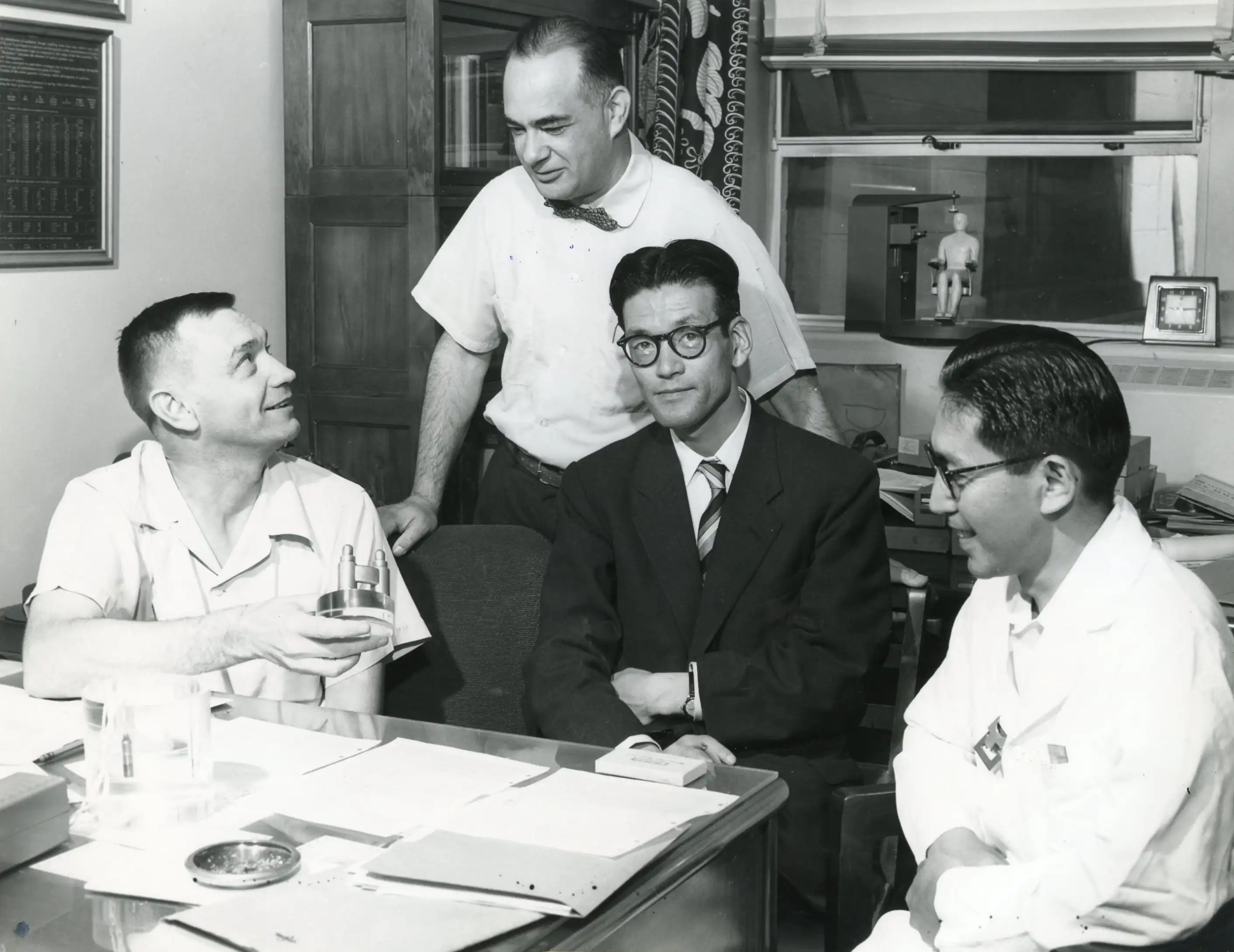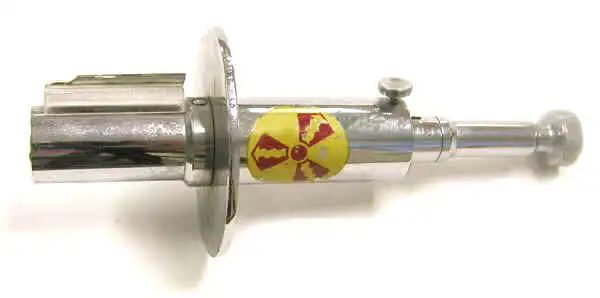
This photo from the online Museum of Radiation and Radioactivity shows the injection of a radiopharmaceutical into a patient’s arm.
Did this historical picture raise your eyebrows like it did mine? In ORAU’s online Museum of Radiation and Radioactivity, you can view hundreds of instruments and items like this syringe shield. Paul Frame, Ph.D., is a retired ORAU health physicist who curated the collection and wrote about each item for us to learn more. So, what’s the story behind this clunky medical tool?
Not only did the size of the injection apparatus catch my attention, but also the rubber-looking, heavy-duty gloves had me doing a double-take! It’s a far cry from what you’d see at the doctor’s office today when you get a flu shot, but that’s because this tool was not used for a routine vaccination. This was built to administer radiopharmaceuticals in the late 1940s and early 1950s by the Medical Division of the Oak Ridge Institute of Nuclear Studies (ORINS), today known as ORAU.
According to the International Atomic Energy Agency, radiopharmaceuticals are radioisotopes bound to biological molecules and target specific organs, tissues or cells within the body. They can be used as diagnostic and therapeutic agents. The purpose of the shield was to protect the nurse or physician from the gamma rays emitted by the radiopharmaceutical that was being injected into the patient. The mirror on the side of the shield (to the left of the round plate) helped the person giving the injection see the level of solution in the syringe. A small battery-powered light inside the shield provided illumination.
The first FDA-approved radiopharmaceuticals (mostly) treated thyroid diseases. Marshall Brucer, M.D., the first chairman of the ORINS Medical Division, specialized in thyroid cancer treatment. Read more about Dr. Brucer and his involvement with a thyroid-uptake phantom for tool calibration studies.

Dr. Brucer is pictured seated on the left talking with colleagues.
The obvious problem with this syringe shield device was its bulky size and weight—5.6 lbs.! Dr. Brucer was not a fan of the design because the awkwardness of the tool led to poor and potentially dangerous injections. He basically called it an “advertisement for health physics wrapped around a piece of junk.”

This syringe shield is an item in ORAU’s online Museum of Radiation and Radioactivity.
More recently, tungsten has become the shielding agent of choice because it is lighter, more flexible and has a higher atomic number (which means greater radiation protection). These newer models are not included in the ORAU collection because our online museum focuses on the history of radiation and not the latest equipment used today. Seeing the tools of yesteryear accentuates how far we’ve come in the field of nuclear medicine.